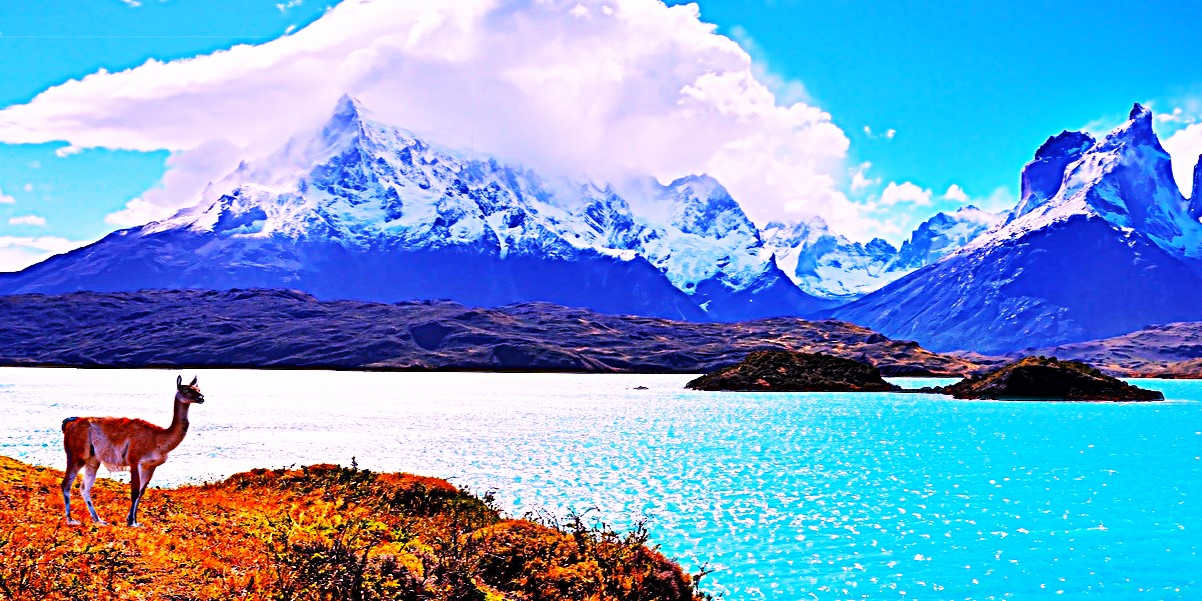Few places compare to Patagonia in terms of stunning scenery and life-changing experiences. Patagonia, which spans the southernmost parts of Argentina and Chile, is a place of extreme contrasts, including towering mountains, enormous glaciers, windswept steppes, and immaculate lakes. Patagonia provides a unique experience for tourists looking for a fusion of outdoor recreation, natural beauty, and cultural diversity. With an emphasis on its geology, attractions, activities, and cultural significance, this article examines why Patagonia is regarded as one of the most intriguing places on Earth.
The Geography of Patagonia
Patagonia is a huge area that is about a million square kilometers in size. It is separated by the high Andes Mountains and spans both Argentina and Chile. Wide open plains, deserts, and steppe landscapes define the Argentine side of Patagonia, while the Chilean side is home to some of the world’s most breathtaking glacier formations, as well as dramatic fjords and lush forests. Patagonia is a haven for hikers, adventurers, and environment lovers because of its geographical diversity.
Iconic Natural Attractions
Patagonia’s wealth of natural features is one of the main attractions. One of Chile’s crown jewels is Torres del Paine National Park, which is well-known for its craggy peaks, azure lakes, and amazing wildlife. The breathtaking Perito Moreno Glacier, a gigantic ice creation that is still growing despite climate change, is located in Argentina’s Los Glaciares National Park. These parks perfectly capture the unadulterated beauty that is so alluring about Pata gonia.
Mount Fitz Roy, the Beagle Channel, and the fabled Strait of Magellan are further must-see locations. Every location gives visitors a taste of Pata gonia’s untamed, untamed soul, where the natural world still rules supreme.
Adventure Activities in Patagonia
Patagonia is a paradise for people who enjoy outdoor activity. With well-known routes like the “W Trek” in Torres del Paine and the walks surrounding El Chaltén, trekking and hiking are arguably the most popular pastimes. In addition to trekking, tourists can go horseback riding across expansive plains, kayaking through freezing lakes, or even mountaineering for the more daring.
Another joy is seeing wildlife. Guanacos, pumas, condors, and penguin colonies can all be found in Pata gonia. Photographers and birdwatchers swarm the area to take pictures of these amazing creatures in their own environment. Because of the region’s size, each journey feels distinct and personal.
The Cultural Side of Patagonia
Patagonia boasts a rich cultural legacy in addition to its stunning scenery. With lengthy histories in the area, indigenous communities like the Mapuche and Tehuelche continue to have an impact on local culture. Welsh tea rooms are still common in cities like Trevelin, Argentina, which was influenced by European settlers, especially those from Spain, Italy, and Wales.
The way of life of contemporary Pata gonians is still strongly rooted in the land. Sheep farming is still a significant sector, and historic estancias (ranches) invite guests to enjoy the hospitality of the locals. Travelers can observe how Pata gonian culture has adapted to the region’s harsh yet stunning climate by investigating various cultural facets.
Why Patagonia is a Bucket-List Destination
Patagonia’s overwhelming feeling of scale and remoteness is what makes it unique among travel destinations. Due to its small population, the area offers visitors a genuine respite from the bustle of contemporary life. Travelers frequently talk about feeling both humbled and inspired when they stand in front of a glacier that reaches to the horizon or when they hike beneath the shadow of tall granite peaks. Pata gonia is an experience that transforms people’s perceptions of the natural environment, not merely a destination.
Practical Tips for Visiting Patagonia
Patagonia travel necessitates planning. The weather in the area is notoriously erratic, with high winds and abrupt temperature swings. The austral summer, which runs from November to March, is the ideal time to go because it offers the best weather for outdoor activities and trekking.
Travelers should carefully plan their itinerary, factoring in time for transportation between distant locations due to the great distances. Although both Chile and Argentina have excellent tourist infrastructure, travelers should nonetheless prepare for challenging weather, particularly in the more isolated regions of Pata gonia.
Conclusion
Patagonia is still a true frontier in a world where so many natural areas are become populated and commercialized. Its wildlife astounds, its landscapes evoke wonder, and its culture uplifts the spirit of the visitor. Pata gonia provides a journey unlike any other, whether your desire is to walk through Torres del Paine, stand in front of the Perito Moreno Glacier, or just take in the clear, pristine air.
Pata gonia is more than simply a place to visit; it is a transformative experience for anybody looking for unadulterated beauty, exhilarating adventure, and cultural depth.












Leave a comment